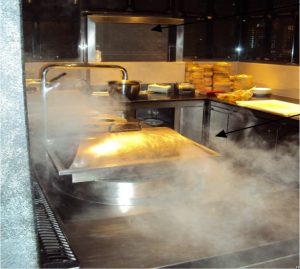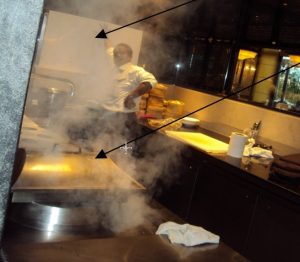As we all know, the hospitality industry is developing a lot these days. Owners are investing heavily into their hotels in order to globalize them and create unique destinations. This development is mainly due to the increase in international tourism and business travel, which drives the need to create different cuisine options. The multitude of cuisine options and equipment designs can have a significant impact on dynamic air flows and energy consumption.
Air Conditioning in Commercial Kitchens
In the hospitality industry, the focus is being given to the improvement of centralized kitchen air conditioning to ensure that the chefs working in the midst of heat are safe and comfortable. Even small-scale kitchens are focused on providing air conditioned kitchens now more than ever.
In the past, importance was generally given to extract and discharge exhaust air alone. Whereas now, in trending commercial kitchen ventilation systems, the following ventilation systems are present to perform air balancing and bring comfort in the kitchen zone-wise:
- HOT Kitchen Zone — When cooking appliances are present, exhaust air and fresh air (makeup air) systems will be present to extract thermal plumes and radiant heat.
- COLD Kitchen Zone — The preparation area and refrigeration area have conditioned air and return air systems present.
- Dish Washing Zone — With the heavy output of steam, systems are in place to extract the steam immediately and recycle makeup air through the area.
Dynamic Air Flow & The Importance of Air Balancing
Dynamic air flow occurs due to the following reasons:
- The heat load is not calculated per the equipment specifications.
- Selection of improper kitchen equipment leads to variation in heat load. Examples include wrong burner design, equipment without proper insulation, wrong electrical appliance selections, etc.
- High air draft transfer through doors/service door/high velocity diffusers.
- Equipment placement changes, such as changing the positions of equipment against the original kitchen design.
- The extraction hood is undersized as it affects suction.
- There is an increase in the number of people in the building.
- Improper selection of exhaust fan, makeup air fan, and exhaust & makeup air ducting system.
As a result of the air draft sources, energy savings plummet!
Kitchen Air Flow Case Study
Something that I have observed quite often is the high draft air transfer through different doors. This is a primary cause of dynamic air flow. Optimal kitchen design would allow the natural hot air from cooking to go undisturbed.

In the image above, the service door is open. The hot air that is rising is disturbed due to the high draft air from the next room, creating turbulence. The high draft should be balanced to decrease energy loss.

In the second image, the service door is closed, allowing the hot air to rise without disturbance.
When there is a turbulence, the temperature in the kitchen will quickly rise as the extraction does not happen correctly and it combines with exhaust and supply air. Therefore, this makes the kitchen staff become very uncomfortable, air conditioning is increased to cool down the kitchen, and the exhaust is ramped up. Because of this, extra energy is used when it could have been avoided. If this is constantly being repeated, it will result in discomfort, hygiene will be affected, and there will be a huge loss of energy.
As you are designing your next kitchen, be cognizant of the fact that kitchen design impacts more than meets the eye. Kitchen efficiency goes beyond the layout that makes it easiest for your staff to work; it entails energy usage and safety as well.
Questions? We are here to help. Email ihsales@melinkcorp.com, call (513) 965-7300, or complete the form at the bottom of this page.
